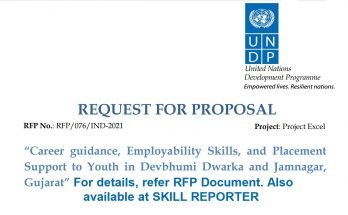Two years into office, the Modi government faces the challenge to fulfill a key election promise to find jobs for armies of young hopefuls, amid signs that factories and firms are hiring at a pace far slower than the millions who are joining the queue.
According to the latest Asia-Pacific Human Development Report only 140 million or less than half of 300 million who entered labor market between 1991 and 2013 found jobs. The report warned that India was likely to see severe shortage of jobs in the next 35 years which broadly mirrors the trends in India’s official employment data. Employment generation in eight key sectors has slowed down to a seven-year low in 2015, labor bureau data released recently showed. About 12 million people join the jobseekers’ queue in India every year. While industry is creating jobs, too many such jobs are in the informal sector, which accounts for 84% of current jobs.
The UNDP report said that while a vibrant informal economy keeps a large number of low-wage workers employed, such employment leads to many problems, including inadequate protection for workers. The unemployment comes at a time when every sector is short of skilled workers — from masons to teachers to waiters to engineers — perhaps a reflection of an education system that is not imparting skills the economy needs. Of India’s 1.2-billion population, 60% are of the working age. And of the 12 million individuals who join the queue of job seekers every year, only 4% undergo vocational training.
“Strengthening the existing workforce with required skills is a far bigger challenge than creating jobs. Interestingly, skill based jobs, in many cases, pay more than regular jobs,” said Rituparna Chakraborty, president of apex staffing body, Indian Staffing Federation (ISF).
“We have started moving into right direction as framework to bridge the skill gap has been put in place and now we will start executing the policies. We have understood the needs of the industry and will deliver the right type of people soon,” said Dilip Chenoy, former CEO, National Skill Development Corporation (NSDC), which was set up as part of the government’s national skill development mission.
Populous, and strategic, neighbor China’s manufacturing capabilities have long overshadowed India and the government’s push for manufacturing through the signature “Make in India” comes at a time when many big companies are seeking an alternative to the Asian giant as costs and risks rise in the dragon economy.
The government said that there are signs that the “Make in India” initiative has led to more hiring. “Manufacturing facilities take time to set up, but the jobs which get created to facilitate these units have started growing. Be it in construction, logistics, the sectors which become a backbone to technology etc, have started coming up with new openings and are hiring people,” said an official. The government’s Economic Survey tabled in Parliament in February has also said job creation remains a key concern.
“India’s economy needs to create enough “good jobs”—jobs that are safe and pay well, and encourage firms and workers to improve skills and productivity”, the Economic Survey said.
Note: News shared for public awareness with reference to the information provided at leading e-news portals.



